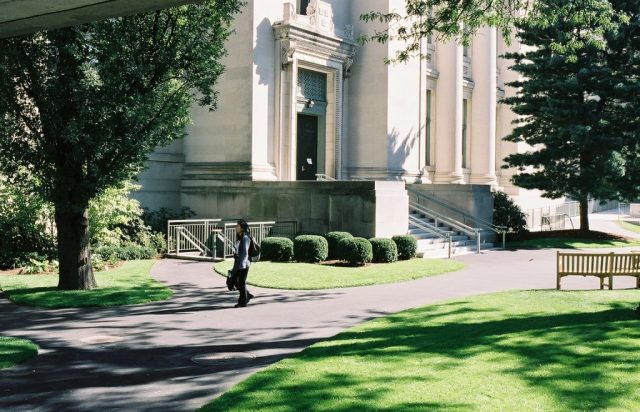This post was written by Rebecca Sutton, who taught the Somalia in Crisis role play during the Re-Imagining International Humanitarian Law course at University of Western Ontario Law School. This is the first post in a series; in subsequent posts we will hear from students in the course as they reflect on their experiences with the role play.
Introduction
In 2011, a series of intense closed-door meetings took place between U.S. aid workers, diplomats, intelligence advisors, the Department of Justice, national security officials, and other federal government representatives. The daunting question that lay before them was how to respond to the famine that the UN had recently declared in Somalia . In the preceding months, hundreds of thousands of Somalis had left their homes to go in search of food, water, and shelter across the desert. Meanwhile, organizations seeking to deliver humanitarian aid to these vulnerable populations had their access impeded by al-Shabaab, an al-Qaeda-affiliated group on the U.S. terrorist list. The legal backdrop to these negotiations was the adjudication of U.S. material-support-to-terrorism laws by the U.S. Supreme Court in Holder v. Humanitarian Law Project.
For some participants in the 2011 meetings, U.S. national security was the paramount concern shaping decision-making in response to the famine. From this vantage point, the delivery of humanitarian assistance was to be guided primarily by counter-terrorism concerns—the potential financing of terrorism a particular worry. Other U.S. stakeholders countered that the focus must instead be placed squarely on saving lives. In this view, the highest priority was ensuring that Somalia’s famine-stricken populations had access to the humanitarian services needed to survive the crisis.
These competing views came to the fore once again in the winter of 2017, this time in the form of a role-play in a JD classroom in Canada. As part of an intensive law course entitled Re-Imagining International Humanitarian Law (IHL), upper-year JD students at Western Law School took part in a simulation of the U.S. response to the 2011 famine. This multi-day exercise was based on the Harvard Case Study Somalia in Crisis: Famine, Counter-Terrorism and Humanitarian Aid, authored by Naz Modirzadeh, Dustin Lewis, Molly Gray, and Lisa Brem, in connection with Harvard Law School’s Program on International Law and Armed Conflict.
“…at its best, experiential learning has the potential to facilitate deeper thinking of what IHL could be, and may spur students to articulate ideas about prospects for reform.” |
As a Visiting Professor at Western Law School, I integrated the Somalia Case Study into my IHL teaching for three reasons: to contextualize IHL as a legal regime, to ground the teaching of law in real-world application, and to spark curiosity about IHL’s future trajectory. First, the case study invites law students to contextualize IHL’s application in two ways: in the context of a particular international crisis, and alongside other legal regimes that apply in armed conflicts and humanitarian emergencies. Second, as a pedagogical tool, this type of role-play also takes the law out of the books. It offers students an experience akin to the international Jean Pictet Competition in IHL, in which a relatively small number of law students participate annually. Third, at its best, experiential learning has the potential to facilitate deeper thinking of what IHL could be, and may spur students to articulate ideas about prospects for reform.
“…role-play exercises such as the Somalia Case Study help to…introduce students to law’s real-world application” |
Having provided some background context, the aim of this discussion is to let law students speak for themselves. I have invited the JD students from my Re-Imagining IHL course to share their own reflections on how they experienced this Somalia simulation exercise. In the personal accounts that follow, students elucidate how they navigated issues such as competing stakeholder interests, consensus building, and the possibility of a ‘humanitarian exception’ to U.S. counter-terrorism legislation. I suggested that role-play exercises such as the Somalia Case Study help to contextualize IHL, introduce students to law’s real-world application, and potentially galvanize ideas about legal reform. As the student testimonials in the following posts will highlight, such exercises also bring to light the politics of law and expose students to the manifold ways in which power shapes and influences law’s implementation. For many JD students who participated in the Somalia simulation, IHL’s humanitarian promise was brought into question as it was subsumed by other pressing concerns such as national security. Students experienced first-hand the frustration of having a particularly powerful stakeholder hold fast to an unpopular position, and they also found that negotiation skills could take on more importance than ‘objective facts’ like human suffering. Evidently, this kind of role-play activity may leave law students feeling perplexed or disillusioned—perhaps especially when one’s participation the course has been galvanized by a humanitarian impulse. At the same time, such simulations have the potential to facilitate an escape from the disenchantment that a purely doctrinal or black letter IHL course might generate. I would argue that ultimately, so long as the end result is not apathy, it is essential for students to grapple with this kind of complexity. In my view, this is a first step towards understanding IHL as a practice.
“I would argue that ultimately, so long as the end result is not apathy, it is essential for students to grapple with this kind of complexity. In my view, this is a first step towards understanding IHL as a practice.” |
A special thanks is due to graduate students Anaise Muzima and Kirsten Stefanik, who served as volunteer judges for the Somalia simulation and edited the student contributions. Read Part 2.




 Fitting meaningful learning into one class period can be challenging. Below, five of our best Negotiation & Mediation Roleplays are represented that can be taught in two-hours or less.
Fitting meaningful learning into one class period can be challenging. Below, five of our best Negotiation & Mediation Roleplays are represented that can be taught in two-hours or less.



